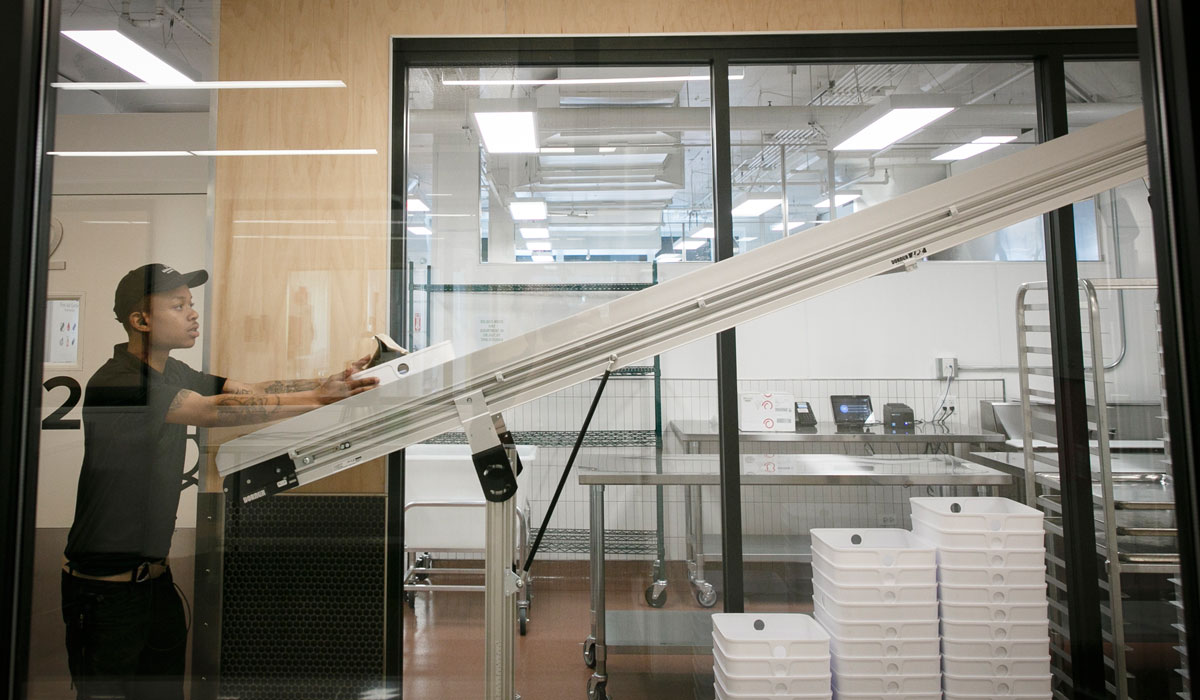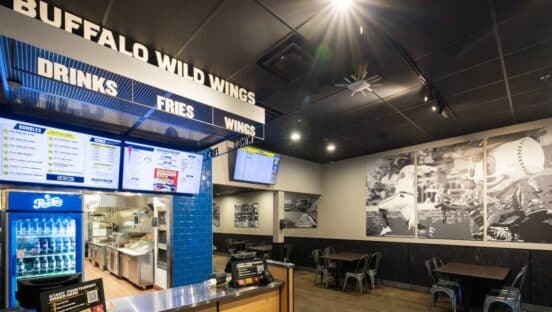The pandemic has accelerated delivery trends, as restaurants were forced to comply with occupancy restrictions, limited operations, and in some cases, closed locations. Even before the virus, online delivery trends were revolutionizing the restaurant industry. As a result, restaurants are looking for ways to capture more off-premises business, directing national chains and mom-and-pop restaurants to ghost kitchens.
Recent Popularity
Restaurateurs view ghost kitchens as an incredible value-add that boosts sales and reach. Depending on the company that operates a ghost kitchen, they focus solely on fulfilling online orders and delivery. For the most part, virtual-only restaurants operate out of a space that consists of a single kitchen. Sometimes a restaurant serves an assortment of menus from different brands, but all the food is prepared in the same space.
Ghost kitchens allow restaurants to deliver straight to customers at home that otherwise wouldn’t have the capability. In a sense, the restaurant wouldn’t even have to physically exist so long as a ghost kitchen is licensed with the restaurant brand. Food establishments that had to close during the peak of the pandemic referred to these virtual kitchens as a means to continue sales.
Some Key Players
Already, an estimated 100,000 virtual kitchen concepts exist on third-party apps, according to the CEO of Chowly, Sterling Douglas. These tech-based delivery companies are equipped with valuable data that illustrate popular cuisine and target geographic areas with the most demand, operating similarly to Amazon or Netflix. Here are the key players in the shared kitchen industry.
CloudKitchens
Uber’s former CEO Travis Kalanick started CloudKitchens, which subleases delivery-only kitchens through monthly memberships. This concept avoids the upfront costs associated with equipment, monthly rent, and the lengthy ground-up construction process. According to the Wall Street Journal, the company has been quietly building an empire, buying more than 40 properties across the country over the last two years.
Kitchen United
Aiming to help independent restaurants, Kitchen United offers shared kitchen space, back-of-house labor, and technology that works with delivery providers and ordering platforms. Kitchen United focuses on off-premises sales beyond delivery, so their locations allow customers to pick-up their orders. Garnering a lot of attention even before the pandemic, Kitchen United raised $50 million in investments.
Postmates
New to the ghost kitchen game, Postmates launched its first dark kitchen concept in Los Angeles. Their model assembles a three-way partnership between top-performing food brands, caterers, and its marketplace. Postmates is responsible for hiring employees, managing inventory from the brand’s suppliers, operating the business, and the kitchen, while the brands receive a royalty of its sales. Postmates’ fast-track momentum and penetration in the virtual kitchen market has garnered so much interest that Uber bought Postmates for $2.65 billion in late 2020.
DoorDash Kitchens
DoorDash Kitchens debuted in the Bay Area in 2019 and operated out of a facility as a third-party deliverer. As the largest delivery provider in the U.S., it naturally transitioned into the virtual restaurant space. Pick-up options extended to 13 suburban markets and allow customers to mix-and-match menu offerings from different brands. Their goal is to help food merchants discover effective ways to reach customers more efficiently. DoorDash is responsible for logistics, marketing, and delivery.
Advantages & Disadvantages
Advantages
Pseudo-branding: Operating under a different brand allows established food brands the opportunity to test new menu offerings and entrepreneurs to focus solely on the food.
Lower overhead costs: Ghost kitchens typically charge a monthly membership fee or rent to utilize their equipment and services.
Optimized space: Ghost kitchens are often around 200 to 300 square feet or less and utilize employees more efficiently through optimized kitchen workflows.
Disadvantages
Misleading customers: Some customers expressed their shock in discovering that big-name chains owned the no-name mom-and-pop restaurants they were ordering from.
Data-driven insights: While this is advantageous for tech companies, as they are given the upper hand with algorithms and data, it could lead to undercutting prices to fight off the competition.
High tenant turnover: While virtual-only restaurants boast affordable rental costs for their services and equipment, the brand is charged around $250,000 and would need to generate at least $650,000 to break even.
Outlook for Ghost Kitchens
Ghost kitchens were initially viewed as a short-lived trend when first introduced, but they are likely part of the post-pandemic life and beyond with the new demand for delivery. As consumers shift priorities to accommodate the new norm, foodservice operators turn to new revenue sources, such as delivery-only concepts. Ghost kitchens are helping revive the restaurant industry in navigating new consumer preferences that include delivery logistics, technology, and branding. Dark kitchens will affect how restaurants operate, redefine the leasing environment, and refresh restaurant concepts.
Michael Pakravan serves as SVP and National Director of Retail Leasing for Matthews. Bringing more than 17 years of brokerage expertise, Michael leads a team of fourteen agents across four offices, representing property owners, buyers, and tenants. Michael has brokered over 600 sales and lease transactions. As an effective deal maker with a proven track record, Michael achieves success for his clients by applying his versatile expertise, calculated market information, and aggressive business strategy to retail leasing and investment sales. In addition to this, Michael’s impressive background has provided him with extensive knowledge and experience in areas such as retail, multifamily, and mixed-used development, restaurant operation, and property management. He has transacted deals with a multitude of national tenants including Chase, Petco, Starbucks, Vallarta Supermarkets, Blink Fitness, Big 5 Sporting Goods, and Dollar Tree. Currently, Michael’s team exclusively represents tenants such as Jersey Mike’s, Gyu Kaku, Silverlake Ramen, Veg N Out, Health Nut, Dog Haus, The Drunkin Crab, Mayweather Boxing, and the Xponential Fitness brand, which includes Club Pilates, Yoga Six, AKT, Stretch Lab, Pure Barre, Row House, Cyclebar, and Stride.












